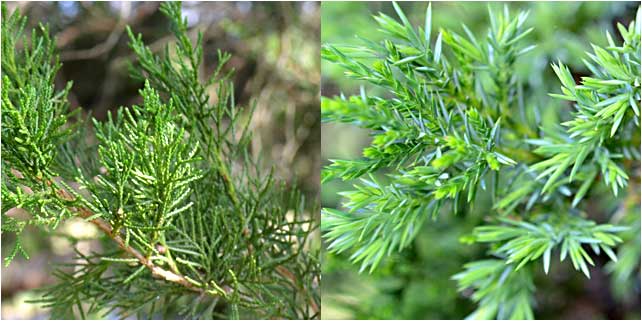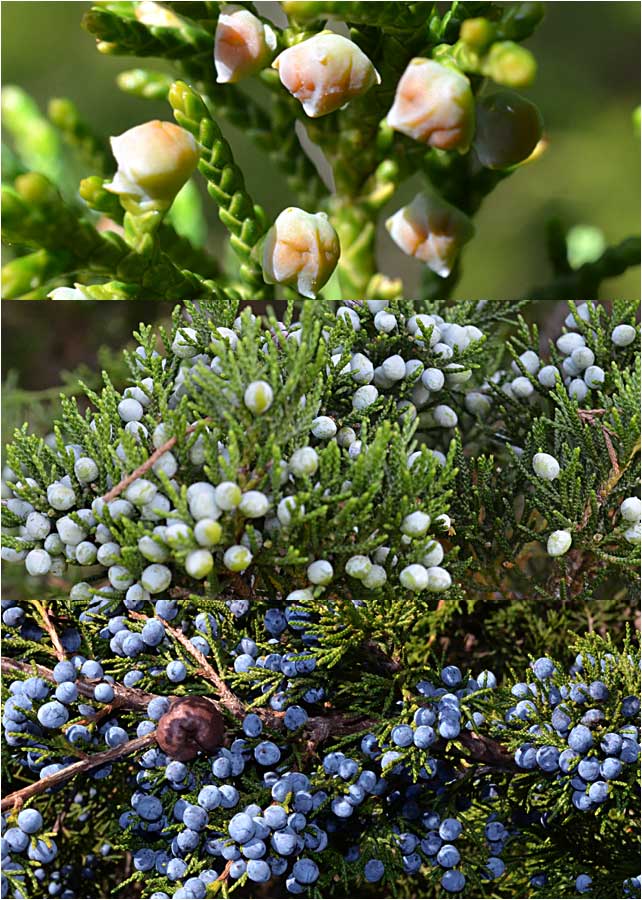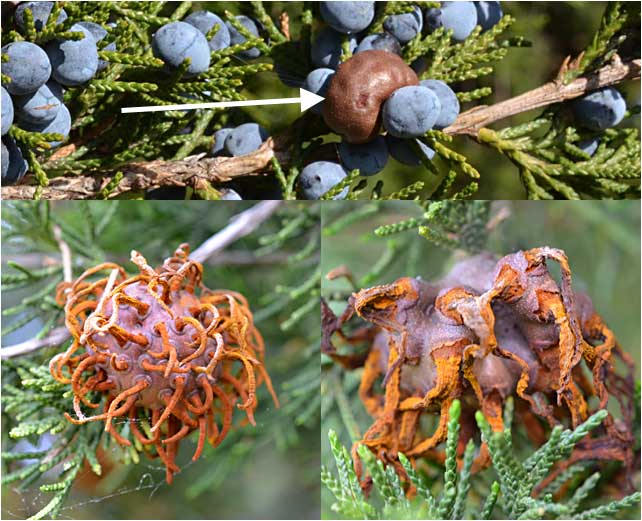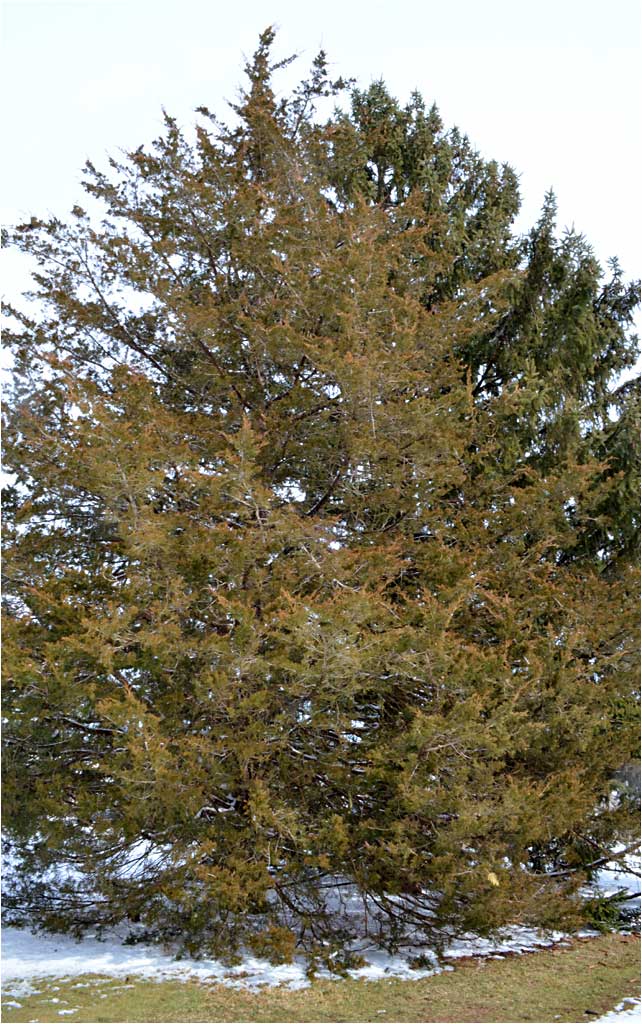24. EASTERN RED CEDAR
Juniperus virginiana

Eastern Red Cedar is a medium sized, native conifer that should be more widely planted in the Northeast. It maintains this color for 3 seasons with only a slight variation in color. The tree is dioecious (M/F flowers on different trees), and this one is female. The fruit is highly prized by birds and wildlife. Like the Pin Oak, Red Oak, and Black Cherry that make up the Arboretum's Keystone Corner, this tree is also a keystone species. (Douglas Tallamy, book: Bringing Nature Home)
NEEDLES, CLOSE-UP

We see how the needles are formed on Eastern Red Cedar. Mature growth has rounded points on the leaves. Here you also see the female cone which looks like a berry. "Cedar" is a bit of a misnomer - this is not technically a cedar tree but rather a JUNIPER - its scientific name is Juniperus virginiana. Some distillers use the berries to make gin.
SPRING NEW GROWTH

Mature foliage (left) has rounded points and circular needles. Young growth (part of 1st year) has flatter needles which are very pointed. Young needles are also slightly lighter in color.
FEMALE CONES

Female Red Cedar trees produce large amounts of cones every 2 - 3 years, but you typically can find single cones on the tree in any year. You just have to look a bit more. The unfertilized conelets begin as whitish orbs (top), begin to ripen after fertilization (middle), and are ripe when blue to dark-blue (bottom). Cedar Waxwings find the berry-like cone irresistible.
CEDAR APPLE RUST

These other-worldly looking organisms can be found on both Apple trees and Red Cedar Trees. It is called Cedar Apple Rust. It is a type of fungus called a rust fungus, and it is unusual in that it needs two hosts to complete its life cycle. It is benign to Red Cedar, but can (and does) cause major damage to Apple orchards across the U.S. It must live in close proximity to an apple or crabapple, and we have Apple Trees in our Orchard close by. They engorge after rainfall (above).
WINTER, EASTERN RED CEDAR

During Winter months, you will notice a distinct change in coloration of Eastern Red Cedar. The trees acquire a brownish tinge, particularly to needles on the outside of the tree. This coloration is natural and part of how the Red Cedar deals with cold temperatures in temperate climates.